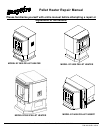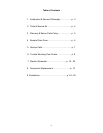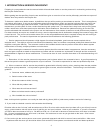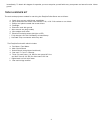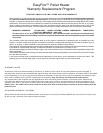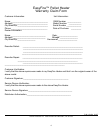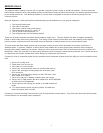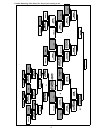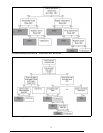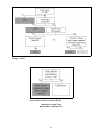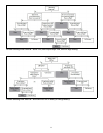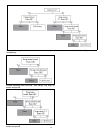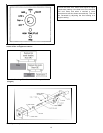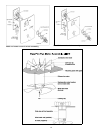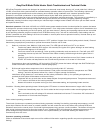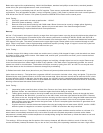
7
SERVICE CALLS
The objective when making a service call is to get the customer up and running as quickly as possible. For this reason the
best method of attack is to find the problem quickly and isolate the faulty component and swap it out with the good component
in your dealer service kit. The defective module or part can then be repaired to returned to the factory away from the
customer's home.
With this objective in mind the EasyFire troubleshooting can be divided into six (6) general categories:
1. The fan and feed motors.
2. The main circuit board.
3. The switch (control knob) circuit board.
4. The temperature sensors T-1 and T-2.
5. The AC power line components, i.e.,
6. The wiring harness and connectors thereto.
These six (6) areas represent the areas where problems might occur. They are listed in the order of highest probability,
based on their history and level of complexity. The design of the electronics has been done with reliability as the highest
priority, and the components which are under the most electrical or thermal stress are very conservatively rated.
The main board has been listed second due to the large number of parts, which increases its chances of failure on a
statistical basis. In practice, however, it should be the most reliable due to the rigorous test procedure each board goes
through before being installed on the stoves. Because of this mechanical items such as the motors should be suspect first.
Remember, ninety per cent (90%) of pellet stove failures are due to improper maintenance by the end user! Check the stove
for cleanliness and routine maintenance before doing any mechanical service work.
Following is a list of complaints and/or service problems which represent at least ninety five (95% per cent of possible service
calls:
1. Stove not running at all.
2. Feed motor runs, but no fan.
3. Fan motor runs, but no feed.
4. Stove runs, but shuts down about 10 minutes after start up.
5. Stove runs, but keeps shutting down with over-temp (red)
LED coming on.
6. Stove runs, but heat output remains at the LOW level, even
when switch is on HIGH.
7. Stove does not run on battery or battery does not charge.
8. Stove runs on FAN position but when switched to LOW, MEDIUM
or HIGH shuts off immediately.
9. Stove seems to be running very HIGH or CLEAN mode at all
times.
10. Fan speed seems normal for each position, but feed rate
seems excessive even on LOW.
Following is a trouble shooting Flow Chart for each of the problems outlined above. If you follow the flow chart carefully each
of the problems can be solved quickly and easily.



